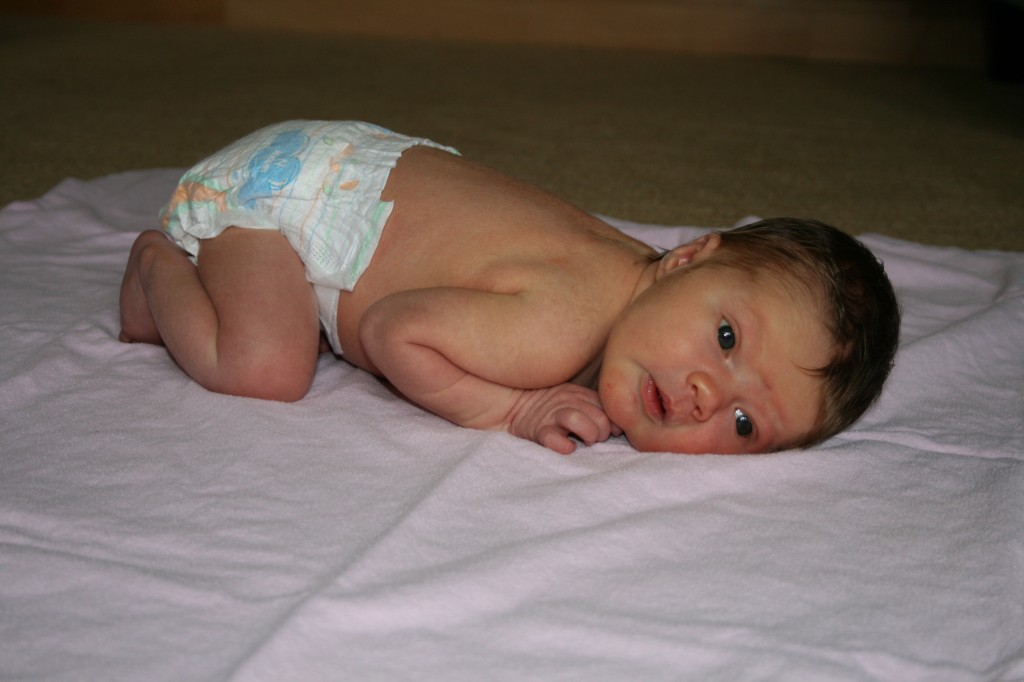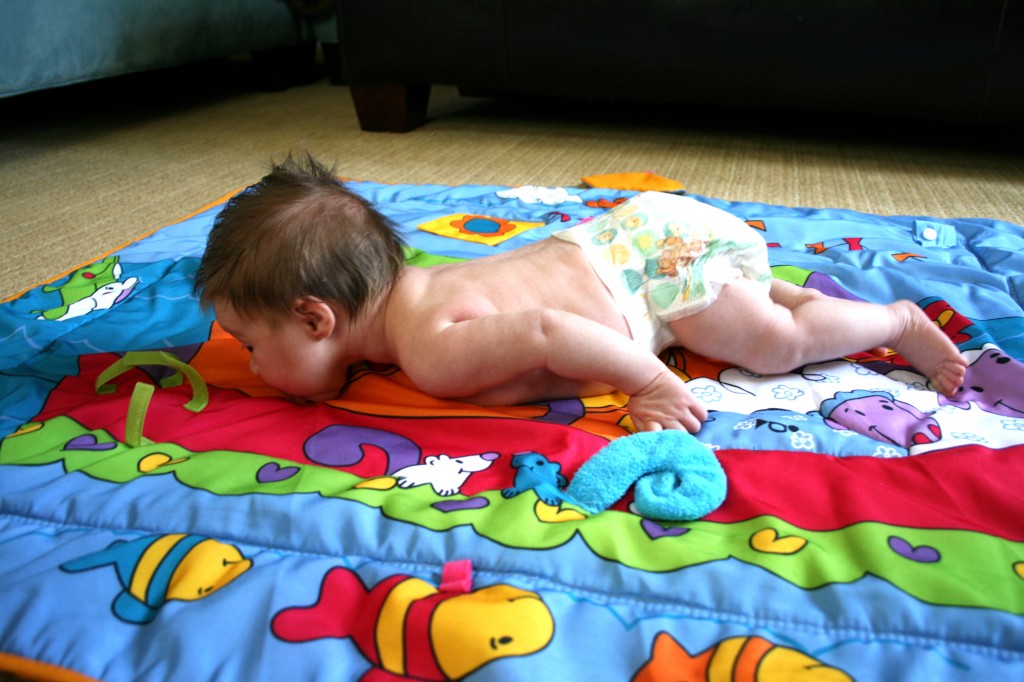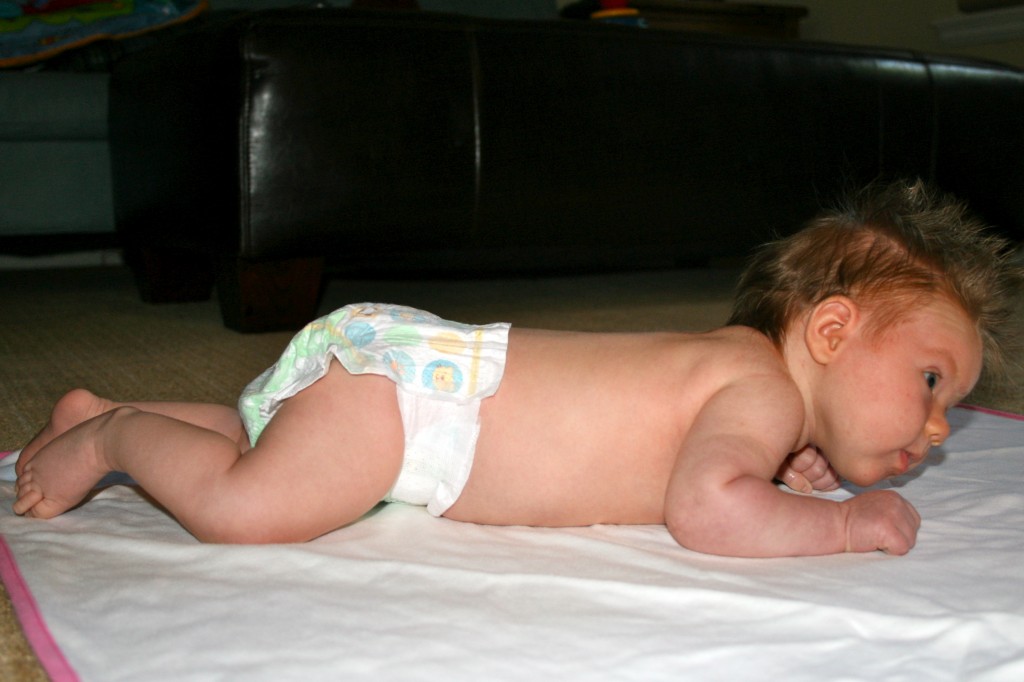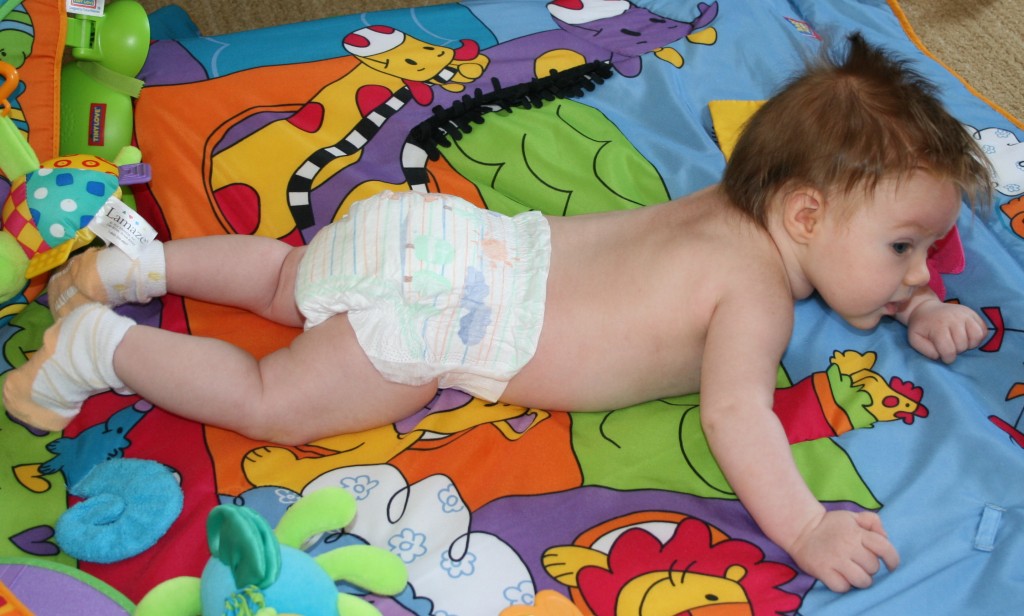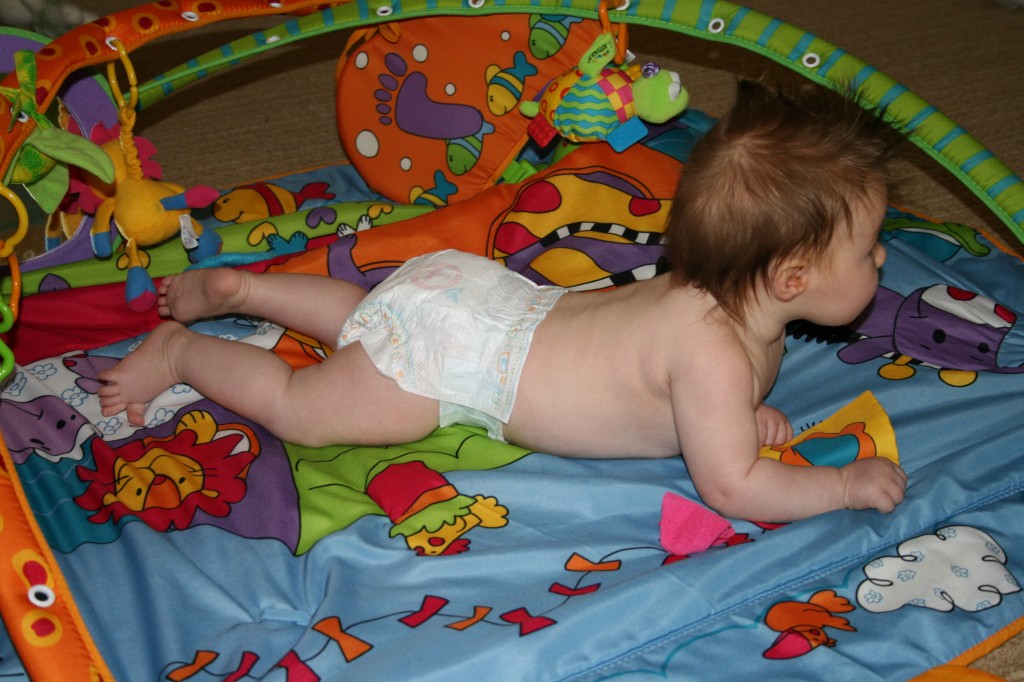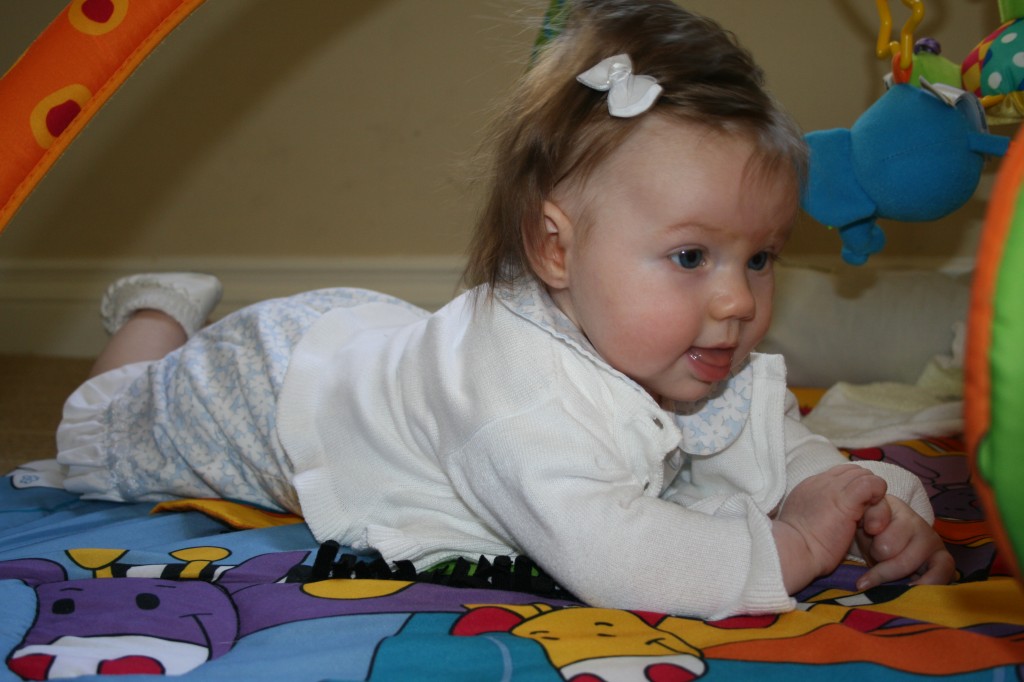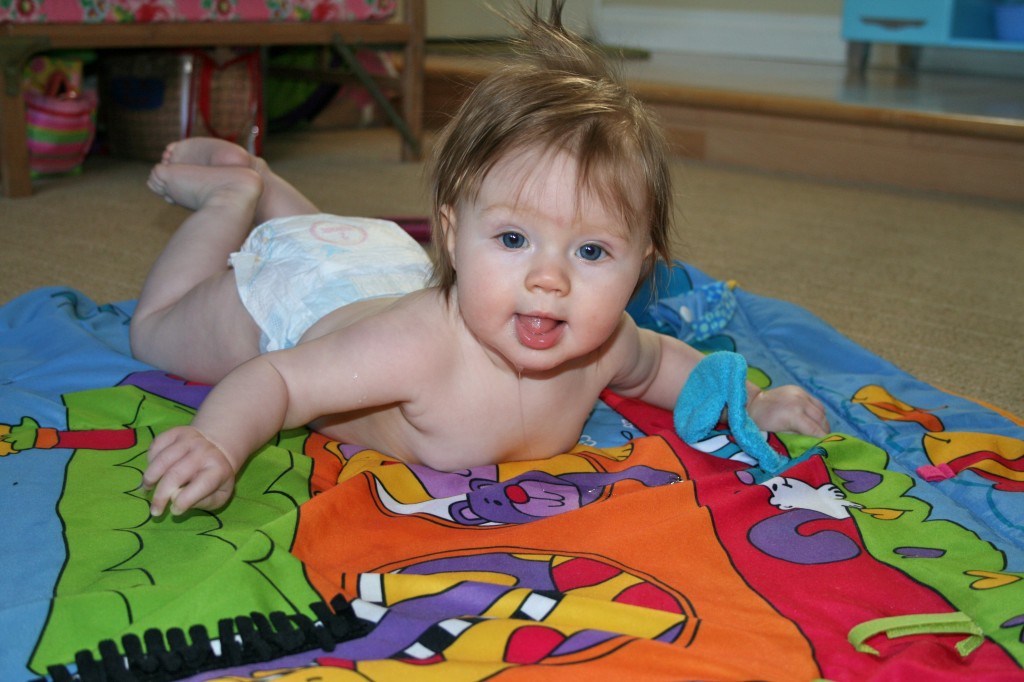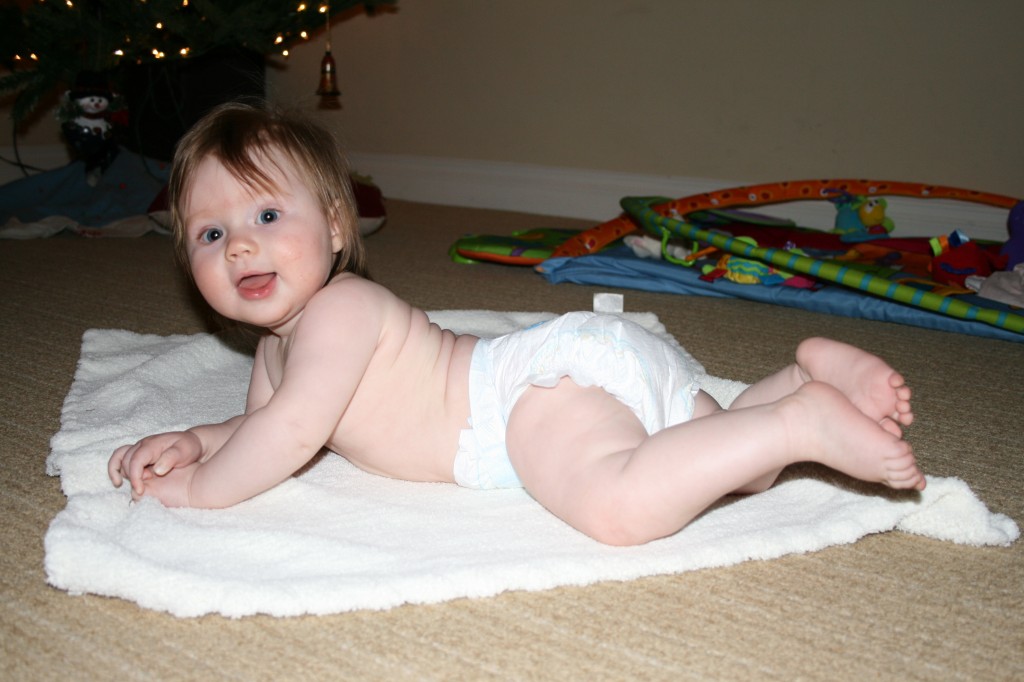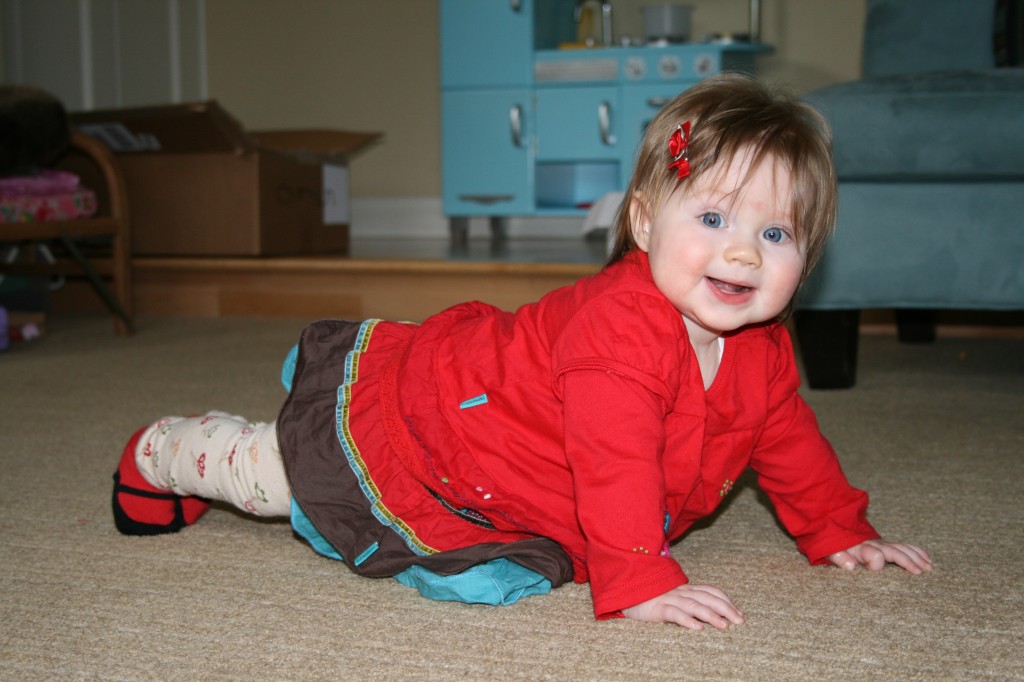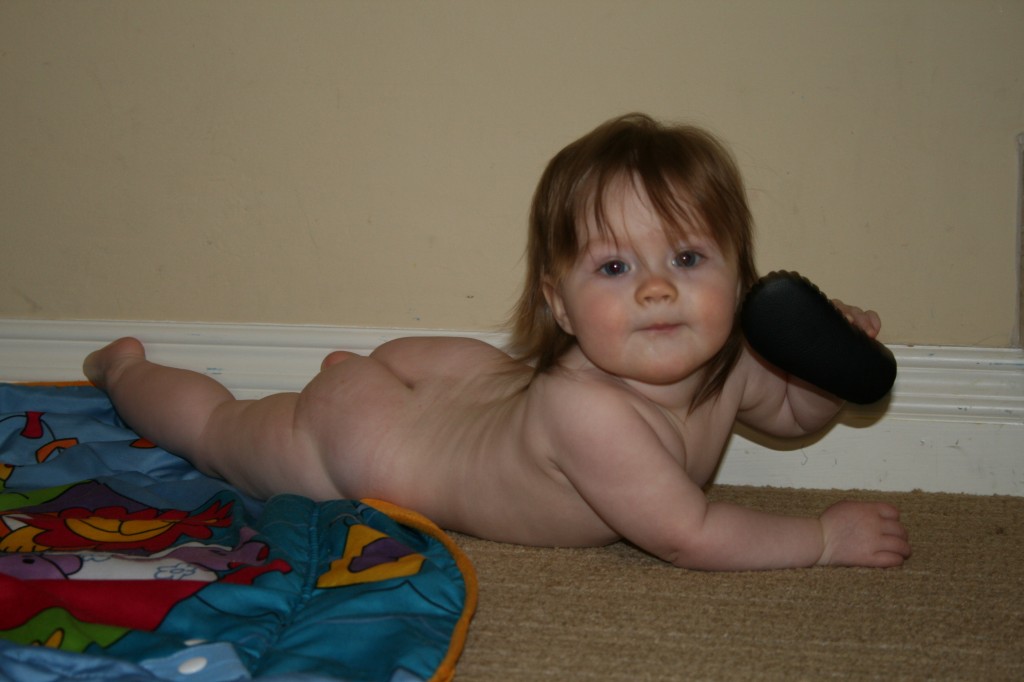Independent sitting is an empowering milestone for your baby to reach, usually around six months. Baby is upright and sees the world from a completely new perspective. Baby has two free hands to reach, grab and manipulate and explore objects. AND, parents have a baby who can more easily entertain himself for a while without worrying about him crawling away…yet.
The sitting position is also very new from the perspective of posture control. For the first time, baby will control a position where his body and head cannot immediately contact, lean or rest on the floor or other surface. This requires balance with finely graded muscle control, strength and endurance in the neck, trunk, and leg muscles.
Usually baby wants to be upright before he can safely stay there independently (they often fall backwards when first trying to learn to sit up). Before you use props such as the very popular Bumbo chair, please make sure baby’s alignment is appropriate: 1) legs out in front on a flat surface rather than tucked underneath him or propped or in a wide butterfly position; 2) pelvis and back straight rather than rounded in a C-curve; and 3) head in midline rather than tilted one direction. Babies younger than five months usually do not have enough strength or control to practice sitting upright by themselves, even in a propping device. If they do sit in a propping device, they will more than likely be leaning heavily into the support barrier rather than trying to move away from it. However, if sitting alignment is good and baby is just learning the finer points of control before he achieves full independence, feel free to provide a safe environment for him to practice.
Three options (of many):
1. Place baby between your legs as you both sit on floor in long sit (legs in front, knees straight and knees/feet pointing up or slightly outward). Provide contact to the sides of baby’s hips with your legs and have baby reach for toys in front and slightly to the side. You can also rock side to side to provide sensory input about weight shifting, an important foundation of movement. As he develops more control, increase the space between your legs and baby’s hips so there is a wider gap and a larger space for him to control. Place toys in different places in front and to the side (first just outside one foot, and progressing backward closer to hip). The more baby has to reach outside the immediate base of his legs, the more control he needs to contact and grab the toy and return back to the middle to play. Also, the further back the toy is placed from toe to hip to behind the hip, the more he has to weight shift over his hip and rotate his whole body, making the movement more complex. Just remember that the baby’s goal is to get and play with the toy, not necessarily to learn to sit independently. So please let baby play with the toy once he gets it rather than taking it away and having him practice the move again.
2. In a small open box that is stabilized so it won’t tip over, baby can sit with legs in front and toys placed inside box, on walls or dangling above. You can also cut a few holes in side of box for baby to discover and explore. The walls are close enough to provide a barrier so when he does lose his balance, he falls into the side wall rather than all the way to the ground. The walls should be close enough to the baby so that he can push off them and recover back to the middle by himself. The box walls are also close enough and high enough so the impact from the “fall” is distributed across more of his body and the velocity of the hit is very slow, keeping him safe from injury. As he improves, you can use a bigger box so there is more room for him to move, make mistakes and learn from them. Finally, transition baby to an open space on the floor with baby surrounded by pillows or other soft objects, just in case he loses his balance and falls completely. In this case, you will probably need to help him get back into sitting. The box option (as long as it is stabilized and won’t tip over), allows baby to safely practice sitting without you being immediately present as in option #1.
3. Part of sitting independently is being able to control getting into and out of sitting independently. Babies typically master independent sitting when placed in the position by a parent before they can get there by themselves. However, if you practice the transition from sitting to floor and floor to sitting every time you set baby down or pick them up (even starting at birth), they will start to get the idea of how to move in and out of the position and have an easier time learning it. See “Moving in Gravity” blog post for more detailed information.
Most of all, have fun helping your baby achieve this wonderful motor milestone.

